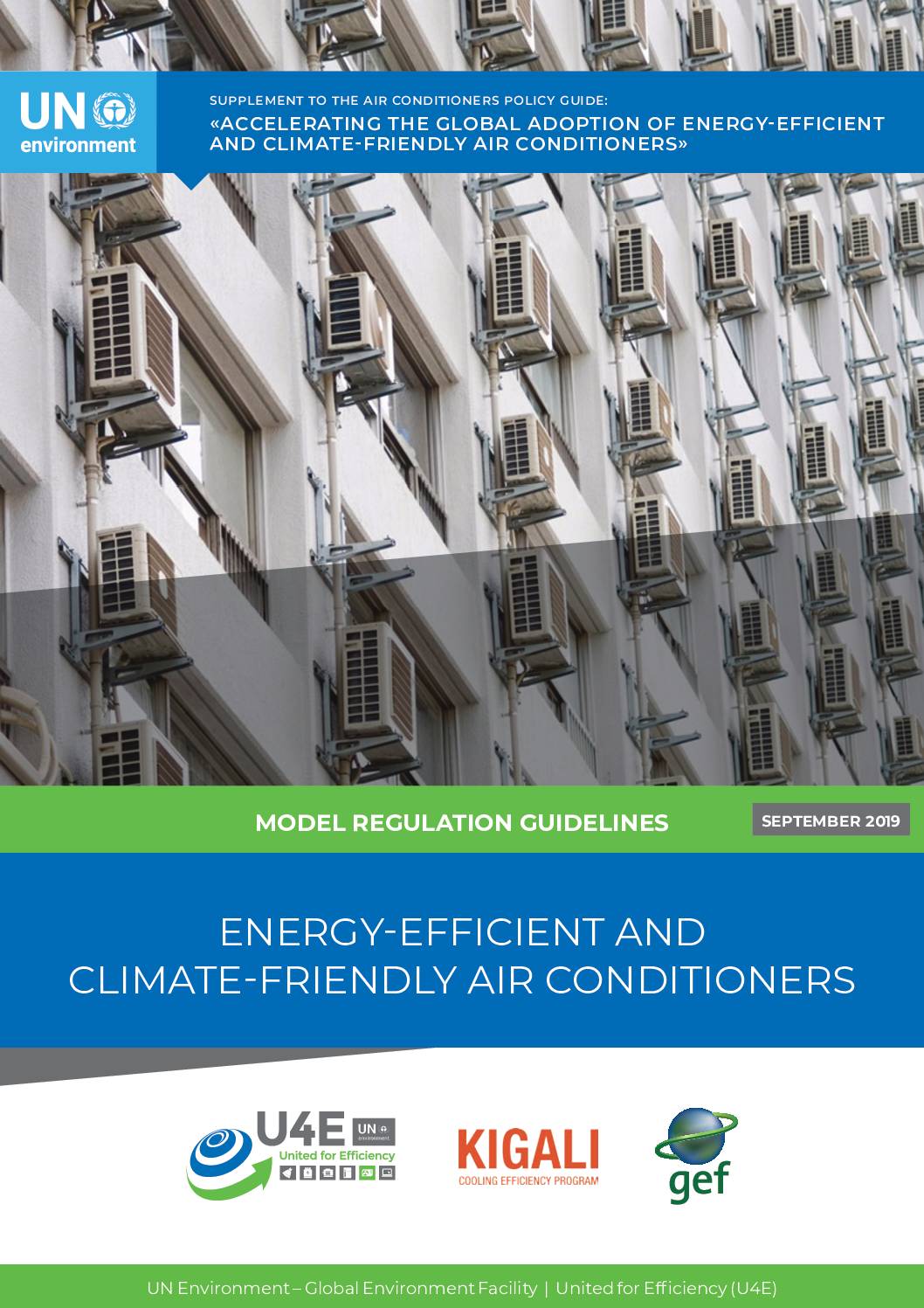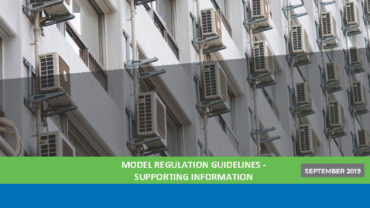The Model Regulation Guidelines supplement the United for Efficiency (U4E) Air Conditioner Policy Guide, “Accelerating the Global Adoption of Energy-Efficient and Climate-Friendly Air Conditioners.”1 It is voluntary guidance for governments in developing and emerging economies that are considering a regulatory or legislative framework that requires new room air conditioners to be energy-efficient and to use refrigerants with a lower global warming potential (GWP) than typical legacy refrigerants, and to ban the importation of products. It covers products commonly used in residential and light commercial applications. An accompanying Supporting Information Document includes the underlying rationale and methodologies.
Today, less than 10 per cent of people in developing and emerging economies own air conditioners. As economies and populations grow, it is expected that energy used for space cooling will triple by 2050, and that the stock in developing and emerging economies will rise from 900 million in 2019 to 1.5 billion in 2030.2 Space cooling, appliances and other plug loads are the fastest‐growing energy end uses in buildings.3 Cooling is critical for occupant health, student and employee productivity, manufacturing processes, data centers, and research. The key is expanding cooling access while mitigating energy and environmental impacts.
Improving energy efficiency has a profound impact on the cost to own and operate these devices. Minimum Energy Performance Standards (MEPS) and energy labels, if well-designed and implemented, are some of the fastest and most effective approaches to improve efficiency. While a number of countries have MEPS and energy labels, many are outdated or unenforced, leaving them vulnerable as dumping grounds for products that cannot be sold elsewhere. Highly inefficient products are prevalent in unregulated markets.4 China’s MEPS and labels that are expected to take effect in 2022 should have significant impacts on the cost and availability of energy-efficient air conditioners globally given the size of the domestic and export markets.
Typical air conditioners require electricity and a refrigerant gas to operate. When electricity comes from fossil fuel power plants – which is the case for nearly 75 per cent of the electricity in non-OECD countries – greenhouse gasses and air pollution are emitted. Many refrigerants have a global warming potential that is well over 1,000 times as potent as an equivalent molecule of carbon dioxide. Fortunately, technologies are widely available to improve energy efficiency and use refrigerants with lower global warming potential.
Link to resource Download sourceShare this

Sector: Equipment and appliances
Country / Region: Global
Tags: air conditioning, climate change, climate relevant regulations, cooling, energy, energy efficiency, global warming potential, refrigerants, rules and regulations, space coolingKnowledge Object: Publication / Report
Published by: United for Efficiency
Publishing year: 2016
Author: Brian Holuj, Won Young Park, Nihar Shah, Noah Horowitz, Alex Hillbrand

